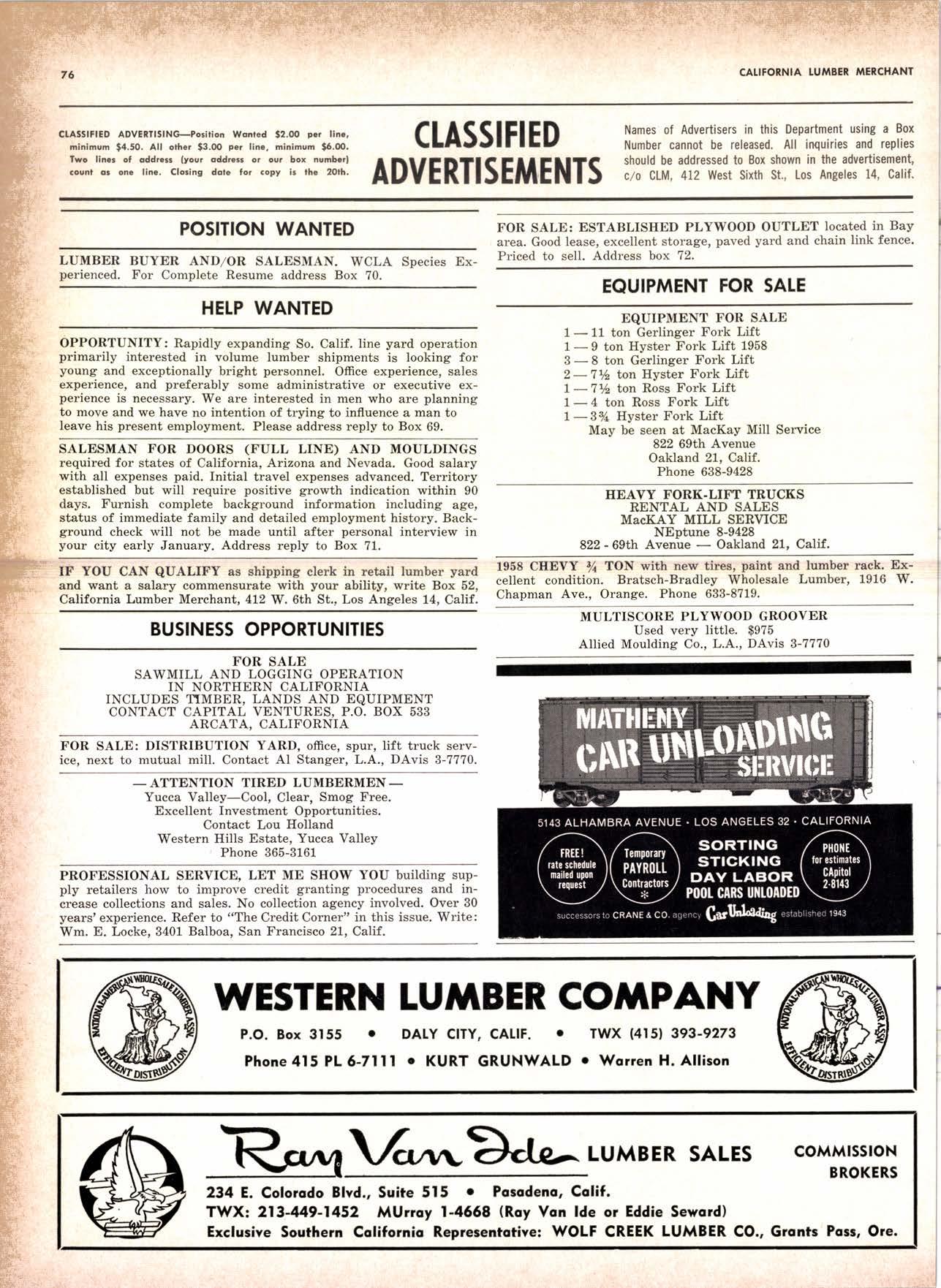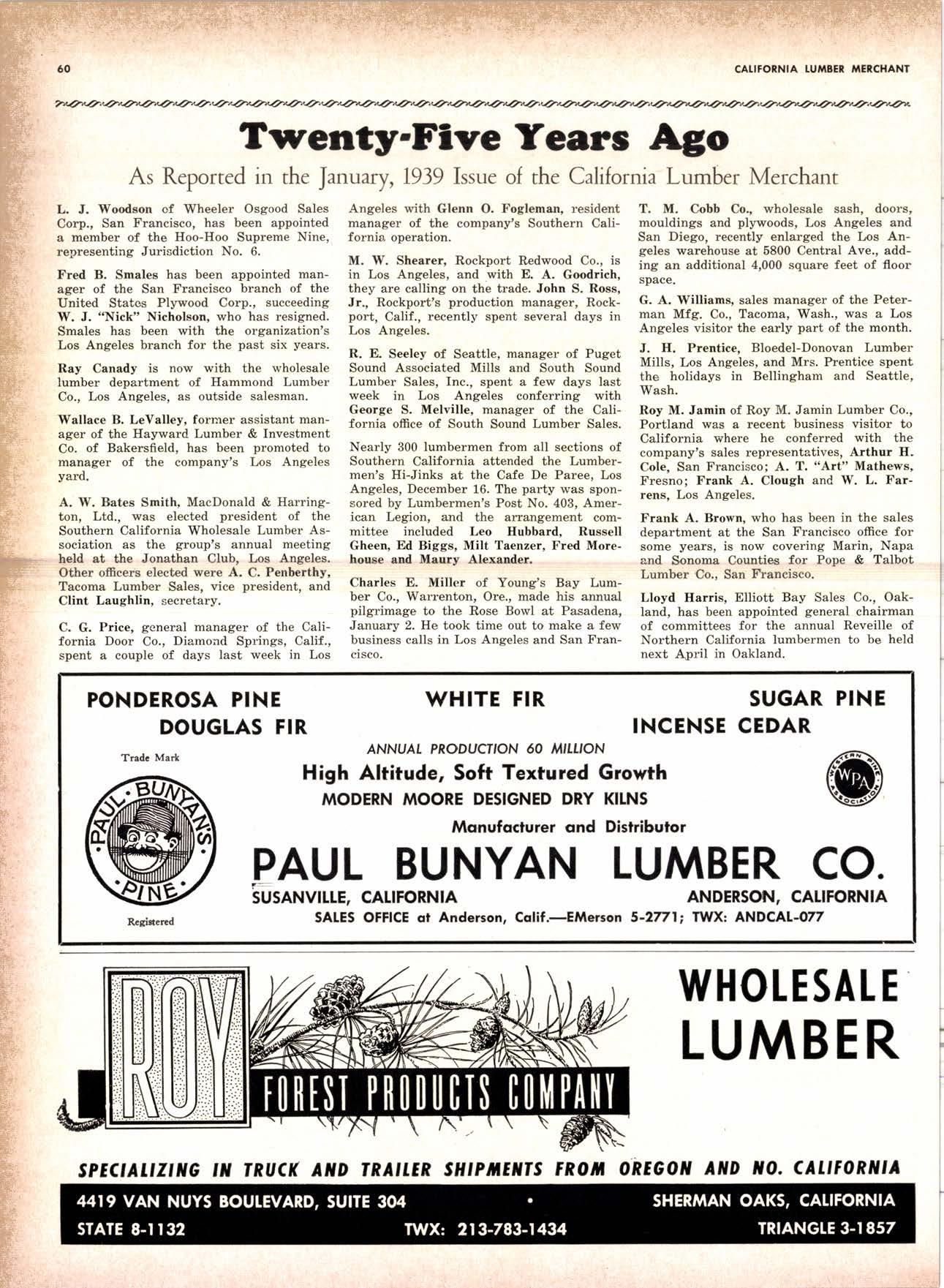
1 minute read
Experimental Wood Saws Use Water Under High Pressure
One of the experimenters involved in the exciting water jet saw project is seen making critical adjustments to part of the apparatus that controls the tremendous forces of the water. Note the massive steel bracings at the top of the control mechanism necessary for safety during high pressure experiments. At lower left is part of the bank of monitoring and control instruments used to measure and adjust the saw.
CALIFORNIA LU}TBER fiIERCHANT
Tremendously powerful jets of water, traveling at almost three times the speed of sound, could be used to replace saws in the lumbering and wood machining industries of the future, University of Michigan re' search indicates.
Jets could sever rather than cut down forest giants. They could be used to remove tree limbs as logs are prepared for the mill, and smaller jets could machine furniture parts,
Great Benefiis
The greatest benefit of the jets would be in the saving of wood now lost as sawdus! a loss which can run as high as 40 per cent of log volume. Other improvements might be much greater speed as compared with sawing speeds, and a minimum of equip' ment maintenance.
The research department is one of seve' ral underway in Michigan's wood techno' logy department to advance knowledge and pra"ti"er in the field of wood science and technology.
It is a co-operative project sponsored by the U-M departments of wood technology and mechanical engineering and the U. S. Forest Products LaboratorY.
Eugene L. Bryan, formerly of the California Forest Products Laboratory and now a candidate for a doctoral degree in wood technology here, is conducting the research. He indicates that although much research lies ahead before the process can be applied commercially, the technique represents a potential means of eliminating inherent disadvantages in present-day wood working tools.
At present water jets ranging from .001' inch to .010-inch in diameter, which travel at speeds up to 3,000 feet per second, are being used to cut maple up to two inches thick. To obtain this velocity the water is compressed under pressures of 50,000 pounds per square inch.
The material removed from the ultrathin cuts, while not extensive in volume, appears to be well suited for chemically derived wood products. IVhile this aspect is not being directly studied it will add to the attractiveness of the technique.
"Although it is not the intent of the project to develop the jet process to the point of usefulness, the study provides information which will be basic to the establishment of feasibility when considering the use oI high energy liquid jets for particular applications," Bryan says. 'oThe price of timber in the woods is becoming greater all the time and anything that can be done to substantially increase the efficiency of utili zation of material harvested will be an economical gain for the forest industries.o'










